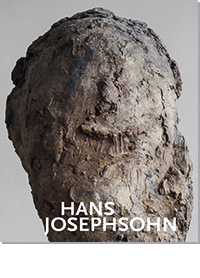Artist's Books / Special Editions
Almond, Darren: All Things Pass
Almond, Darren / Blechen, Carl: Landscapes
Brown, Glenn: And Thus We Existed
Butzer, André: Exhibitions Galerie Max Hetzler 2003–2022
Chinese Painting from No Name to Abstraction: Collection Ralf Laier
Choi, Cody: Mr. Hard Mix Master. Noblesse Hybridige
Demester, Jérémy: Fire Walk With Me
Dienst, Rolf-Gunter: Frühe Bilder und Gouachen
Dupuy-Spencer, Celeste: Fire But the Clouds Never Hung So Low Before
Ecker, Bogomir: You’re NeverAlone
Elmgreen and Dragset: After Dark
Förg, Günther: Forty Drawings 1993
Förg, Günther: Works from the Friedrichs Collection
Galerie Max Hetzler: Remember Everything
Galerie Max Hetzler: 1994–2003
Gréaud, Loris: Ladi Rogeurs Sir Loudrage Glorius Read
Grosse, Katharina: Spectrum without Traces
Hatoum, Mona (Kunstmuseum
St. Gallen)
Eric Hattan Works. Werke Œuvres 1979–2015
Hattan, Eric: Niemand ist mehr da
Herrera, Arturo: Boy and Dwarf
Hilliard, John: Accident and Design
Horn, Rebecca / Hayden Chisholm: Music for Rebecca Horn's installations
Horn, Rebecca: 10 Werke / 20 Postkarten – 10 Works / 20 Postcards
Huang Rui: Actual Space, Virtual Space
Kowski, Uwe: Paintings and Watercolors
Mikhailov, Boris: Temptation of Life
Mosebach, Martin / Rebecca Horn: Das Lamm (The Lamb)
Neto, Ernesto: From Sebastian to Olivia
Oehlen, Albert: Mirror Paintings
Oehlen, Albert: Spiegelbilder. Mirror Paintings 1982–1990
Oehlen, Albert: unverständliche braune Bilder
Oehlen, Pendleton, Pope.L, Sillman
Oehlen, Albert | Schnabel, Julian
Phillips, Richard: Early Works on Paper
Riley, Bridget: Paintings and Related Works 1983–2010
Riley, Bridget: The Stripe Paintings
Riley, Bridget: Paintings 1984–2020
Roth, Dieter & Iannone, Dorothy
True Stories: A Show Related to an Era – The Eighties
Wang, Jiajia: Elegant, Circular, Timeless
Wool, Christopher: Westtexaspsychosculpture
Zhang Wei / Wang Luyan: A Conversation with Jia Wei
 |
|
|||
Hans Josephsohn German / English Hardcover 23.5 x 29 cm 200 pages 93 color and 46 b/w illustrations 978-3-947127-43-6 60.00 Euro |
For sculptor Hans Josephsohn (1920–2012), who was born in Königsberg and had to flee to Switzerland in 1938, the human figure was his life-long subject. His art, shown in solo exhibitions since 1956, manifests its form within spatial surroundings, as a head, half-figure, standing or lying nude, almost archaic in appearance but always anchored in the now. On a closer look, one is fascinated by the intensely worked surfaces of his figures, executed in plaster, then cast in brass, modeled in light to almost pictorial effect, especially in the reliefs, which change with every movement. “To me all that’s important is the relationship between the figure, its separate components, and what the background surface is like,” the artist says in conversation with Hans Ulrich Obrist. “If you take anything away there is nothing left. Nothing at all remains . . . What that means for our time I don’t know.” This mixture of material work and an existentialist view of the human condition is the cause of Josephsohn’s growing importance for the art of our time. Originally shown at Galerie Max Hetzler in Berlin and London, a generous offering of his works can be studied here, while essays and a selection of press releases illuminate his working process as well as the growing reception of this unique artistic oeuvre.
THE INTENSITY OF LIFE The traditional language, with its implied objectification, of having someone ‘sit’ or pose as a life model, doesn’t adequately describe the symbiotic complications of distance and closeness and real-life dynamics as evidenced in the work. These relationships find irrefutable expression in every disturbed surface, ragged volume and counterbalanced composition. Women was deeply involved in both Josephsohn’s life and work. They were no passive bystanders and no interchangeable mannequins. There is almost no work by Josephsohn that doesn’t speak of personal entanglements, the need for intimacy, and their embodiment bound up in the creative act. Josephsohn found it impossible to work without these relationships. His small clay reliefs evidence this state of affairs most viscerally. Some of them record charged scenes of the artist in his studio with a model in endless variations. Josephsohn’s abstract expression is not only on the level of form, composition and surface, rather it goes to their very human substance. The vibrant mass of these works is redolent of love, passion, power dynamics, struggles, convivial loneliness, even existential doubt, dismay and despair. (I am thinking of Roland Barthes’s A Lover’s Discourse (1977) and imagining it accompanied by reproductions of Josephsohn’s work.) His only teacher, Swiss sculptor Otto Müller, had recognized in the 1940s that Josephsohn’s work was “exceptionally immediate”—and it remained strikingly so … So while Josephsohn’s traditional notion of sculpture emphasized the basic elements, the relationships of volumes and forms, it was his relationship to people that not only inspired his work, but is inscribed into it, into its making and continued open-ended relevance. Relationships which always entailed one-on-one encounters with actual bodies and subjectivities, posed and looking in real time, and whose abstract intensity—the intensity of life—Josephsohn strived his entire life to capture. When we view his work, these relationships reverberate with our own interpersonal experiences and our own capacity for empathy and identification.
... |